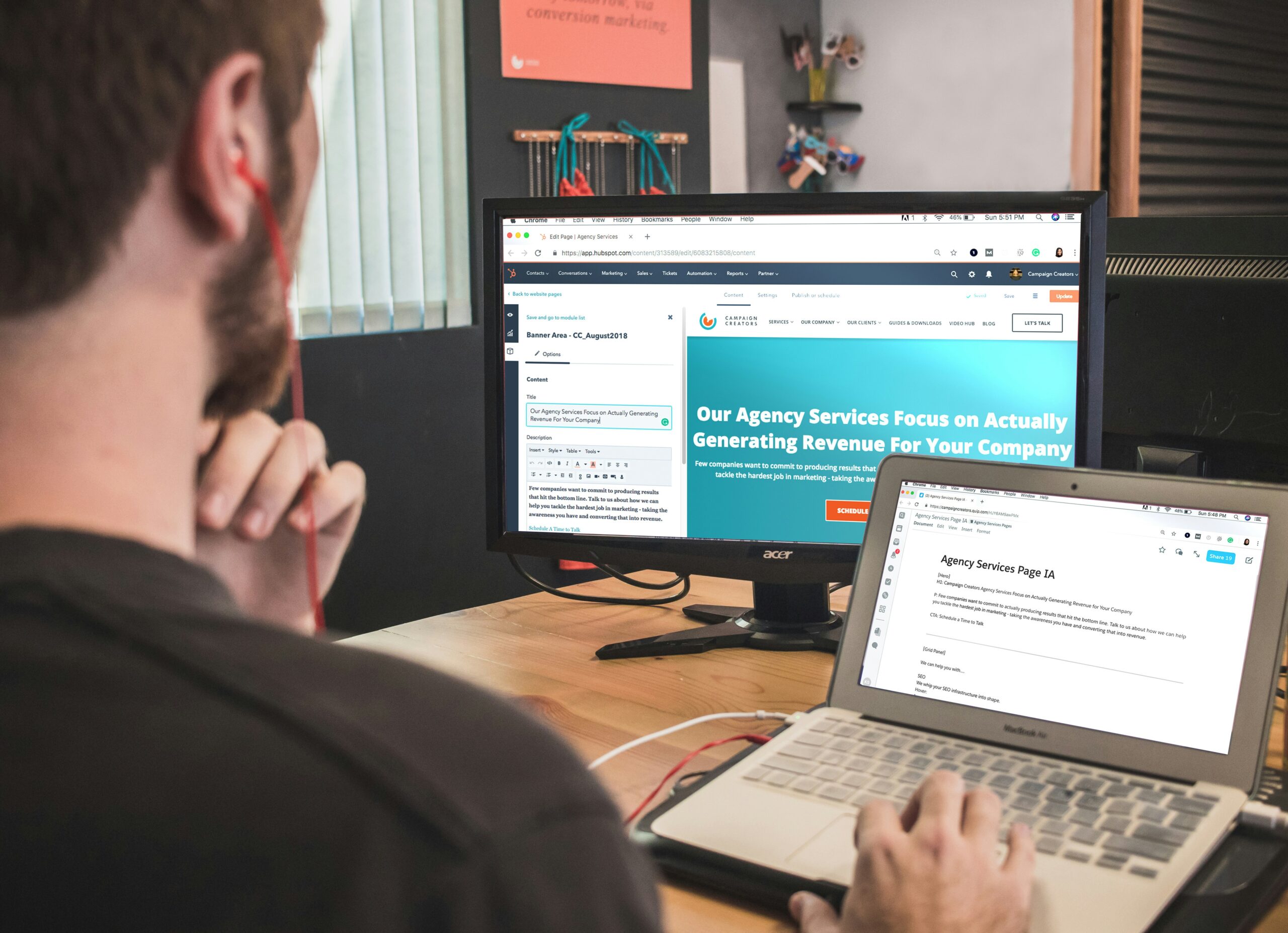Are you struggling to keep your audience engaged after initial contact? Automated follow-up workflows can solve this challenge. This article explores the key components of effective follow-up systems, strategies to boost engagement, and tools to implement these workflows. You’ll learn how to create timely, personalized outreach that nurtures leads and converts prospects into customers. By the end, you’ll have practical insights to streamline your marketing efforts and improve customer relationships.
Key Takeaways
- Automated follow-up workflows streamline customer engagement and improve efficiency in marketing and sales processes
- Personalization and multi-channel approaches enhance the effectiveness of automated follow-up strategies
- Integration with CRM systems allows for data-driven, targeted communications that boost engagement and conversions
- Measuring key metrics and analyzing customer feedback are crucial for optimizing automated follow-up workflows
- Real-world examples show significant improvements in customer retention and lead nurturing through automated follow-ups
Understanding Automated Follow-Up Workflows

Automated follow-up workflows streamline customer relationship management by systematically engaging leads and clients. These systems use predefined triggers to send timely, personalized messages, ensuring consistent brand communication without manual intervention.
Workflow automation enhances efficiency by managing tasks like document delivery, contract renewals, and appointment reminders. This allows businesses to maintain regular contact with customers while focusing on high-value activities that require human expertise.
Effective automated workflows adapt to customer interactions, providing relevant information based on their behavior and preferences. This tailored approach improves engagement rates and strengthens customer relationships, ultimately driving business growth.
Key Components for Effective Follow-Up Workflows
Effective automated follow-up workflows rely on key components that drive engagement and streamline marketing automation. These include identifying customer touchpoints, creating targeted messaging, and optimizing the timing and frequency of follow-ups. By focusing on these elements, businesses can enhance personalization, improve accessibility, and build stronger communities around their brand.
Identifying Customer Touchpoints
Identifying customer touchpoints is crucial for creating effective automated follow-up workflows in software-as-a-service platforms. These touchpoints include email marketing messages, onboarding processes, and interactions with the dashboard. By mapping out these key moments of customer engagement, businesses can design targeted follow-up sequences that provide timely and relevant information, enhancing the overall user experience:
| Touchpoint | Purpose | Follow-Up Action |
|---|---|---|
| Initial Sign-Up | User Registration | Welcome Email |
| Onboarding | Product Introduction | Tutorial Series |
| Dashboard Login | Usage Monitoring | Feature Highlight |
| Support Request | Issue Resolution | Satisfaction Survey |
Creating Targeted Messaging
Creating targeted messaging is essential for effective automated follow-up workflows. Businesses can boost brand awareness and improve employee retention by tailoring content to specific audience segments. Utilizing enterprise resource planning systems like ClickUp, companies can gather valuable feedback and data to refine their messaging strategy, ensuring each communication resonates with its intended recipients.
Timing and Frequency of Follow-Ups
Effective workflow automation tools optimize the timing and frequency of follow-ups based on customer behavior and engagement patterns. By analyzing user interactions and productivity metrics, businesses can schedule automated messages at optimal times, increasing the likelihood of response. This technology-driven approach ensures that follow-ups are neither too frequent to be intrusive nor too infrequent to lose momentum, striking a balance that maintains customer interest and fosters long-term relationships.
Strategies to Maximize Engagement

Effective engagement strategies for automated follow-up workflows encompass personalization techniques, multi-channel approaches, and A/B testing. These methods enhance business process management, boost loyalty programs, and optimize sales through automated workflows. By tailoring messages, leveraging various communication channels, and refining strategies based on performance data, businesses can significantly improve customer engagement and cart completion rates.
Personalization Techniques for Follow-Up
Personalization techniques for follow-up workflows leverage drag and drop interfaces in platforms like Smartsheet and Salesforce to tailor messages based on customer information. These systems allow businesses to segment audiences and create targeted content, improving return on investment through increased engagement. By utilizing data-driven personalization, companies can deliver relevant information to each recipient, enhancing the effectiveness of their automated follow-up strategies:
| Personalization Element | Implementation Method | Expected Outcome |
|---|---|---|
| Name Recognition | Dynamic Field Insertion | Increased Open Rates |
| Behavior-Based Content | Conditional Logic | Higher Click-Through Rates |
| Purchase History Integration | CRM Data Sync | Improved Cross-Selling |
| Location-Specific Offers | Geotargeting | Enhanced Local Engagement |
Utilizing Multi-Channel Approaches
Utilizing multi-channel approaches in automated follow-up workflows enhances customer retention and satisfaction. By integrating accounting systems with robotic process automation, businesses can deliver personalized messages across various platforms, catering to user preferences. This strategy ensures consistent communication and improves engagement rates by reaching customers through their preferred channels:
- Email campaigns for detailed updates
- SMS notifications for time-sensitive information
- Social media interactions for brand engagement
- In-app messages for product-specific communication
A/B Testing for Optimal Results
A/B testing is a crucial strategy for optimizing automated follow-up workflows in CRM and project management systems. By comparing different versions of content, subject lines, or send times, businesses can refine their approach based on concrete data. This method allows companies to implement logic-driven decisions, improving chatbot interactions and content management system effectiveness. Through iterative testing, organizations can continuously enhance their follow-up strategies, leading to higher engagement rates and more successful customer interactions.
Tools and Platforms for Automated Follow-Up Workflows

Effective automated follow-up workflows rely on robust tools and platforms. This section explores popular automation software that streamlines lead generation and email automation processes. It also examines how these tools integrate with CRM systems, enhancing knowledge management and CRM automation capabilities for businesses seeking to maximize engagement.
Overview of Popular Automation Software
Popular automation software offers comprehensive solutions for businesses seeking to enhance their follow-up workflows. These platforms integrate seamlessly with finance systems and shopping cart functionality, enabling companies to send targeted abandoned cart emails and personalize the customer experience. By leveraging data-driven insights, these tools empower businesses to create sophisticated automation sequences that nurture leads and drive conversions efficiently.
Integration With CRM Systems
Integration with CRM systems enhances process automation and marketing workflow automation, streamlining business processes for improved efficiency. By connecting automation workflows with customer relationship management platforms, organizations can create seamless patient experiences and personalized follow-up sequences. This integration allows for real-time data synchronization, enabling businesses to deliver targeted communications based on customer interactions and preferences, ultimately driving engagement and conversions.
Measuring Engagement Success

Measuring engagement success in automated follow-up workflows involves tracking key performance metrics and analyzing customer feedback. Tools like Zapier and HubSpot enable businesses to monitor conversation rates and workflow effectiveness. By evaluating these metrics and customer responses, companies can optimize their customer service processes and refine their automation strategies for improved results.
Key Metrics to Track Performance
Key metrics for tracking performance in automated follow-up workflows include open rates, click-through rates, and conversion rates. These indicators help businesses assess the effectiveness of their workflow automation software and contact center strategies. By monitoring these metrics, companies can identify areas for improvement in their DevOps processes and database management, ultimately reducing risk and enhancing customer engagement:
| Metric | Description | Target Range |
|---|---|---|
| Open Rate | Percentage of recipients who open emails | 20-40% |
| Click-Through Rate | Percentage of recipients who click on links | 2-5% |
| Conversion Rate | Percentage of recipients who complete desired action | 1-3% |
| Response Time | Average time to respond to customer inquiries | < 24 hours |
Analyzing Customer Feedback
Analyzing customer feedback is crucial for refining automated follow-up workflows. Companies can leverage intelligence gathered from email workflows and SMS responses to optimize their marketing automation workflow. By systematically reviewing customer comments and engagement patterns, businesses can identify areas for improvement in their automated sequences, ensuring that each touchpoint resonates with the audience and drives desired actions.
Conclusion
Automated follow-up workflows help streamline customer relationship management, improving both efficiency and personalization in marketing efforts. By focusing on key elements such as customer touchpoints, targeted messaging, and optimal timing, businesses can enhance engagement and foster stronger connections with their audience. When these strategies are effectively implemented using the right tools and platforms, they lead to better customer retention, increased conversions, and overall business growth. Measuring success through key metrics and customer feedback allows for continuous improvement, ensuring that automated follow-up workflows remain a valuable asset in today’s competitive digital landscape.






